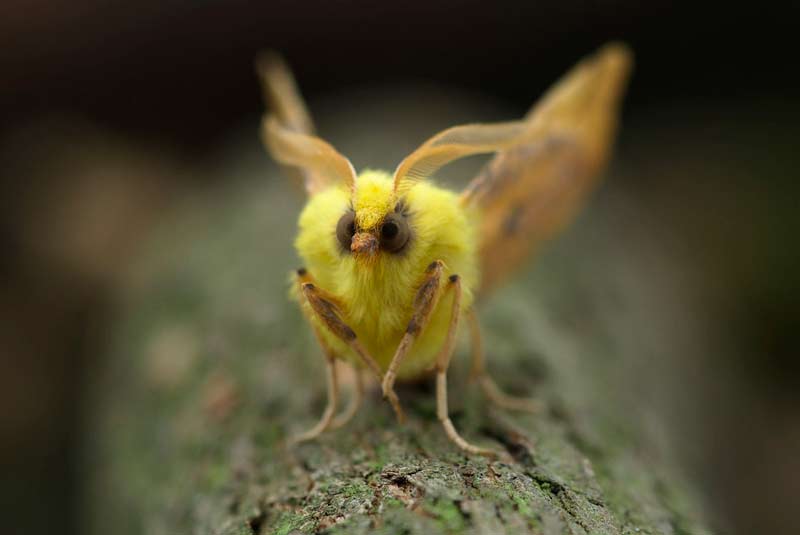Lyndsey Cox, GiGL’s Data Entry Officer

Canary Shouldered Thorn Moth | © North-East-Wildlife
GiGL currently holds nearly 2.8 million species records. Whilst I can’t claim to have input all of those records myself, I can lay claim to just over 1.5 million.
In recent years, the greatest number of records has come to GiGL as large datasets from established recording schemes such as the London Natural History Society (LNHS).
LNHS operates within a 20 mile radius from St Paul’s Cathedral and collates records from numerous recorders across this study area. Both amateur enthusiasts and experts contribute records to central LNHS recorders covering a wide range of taxa; from fungi to flowering plants, mammals to moths. Formed by the merging of two smaller natural history groups in 1913, the LNHS began producing their own publications in 1914. The annual Bird Report has been published since at least the 1930’s and regular surveys of Bookham Common began in 1942.
Colin Plant is the incumbent LNHS moth recorder and when he took over this role in 1978 he inherited moth records going back for many years. Of course, the majority of the historical records were in paper format, but even recent records are rarely sent in a format which is compatible with MapMate; the software used nationally by county moth recorders to store data.
As part of the ongoing cooperation between GiGL and the LNHS, GiGL offered assistance to digitise the historic data and, since 2008, I have spent nearly 400 hours digitising over 20,000 moth records. These records were returned to Colin for verification, a vital stage in the process where the species identification is checked by an expert.
We have now made it through the extensive backlog of moth data. Colin has an up-to-date database within MapMate and the records have been verified. The next step is for GiGL to receive the verified MapMate file back from Colin. These will be uploaded into GiGL’s database, where they will be made available for use by our partners and end users.
Other LNHS recorders have also been working closely with GiGL in recent years, though with varying levels of assistance from us. Since 2010, we have digitised and uploaded 19,000 butterfly records and over 4,000 flowering plant records from across London. We are also working closely with LNHS recorders on taxa including odonata, plant galls and birds.
We hope to continue this close cooperation with the LNHS. Colin receives a large number of moth records each year and, like all LNHS recorders, he is a volunteer carrying out his own recording and collating records from others in his own time. The support from GiGL allows Colin to concentrate his time and expertise on the important verification step, ultimately providing confidence to end users of the accuracy of the species records. GiGL provides a free service to all volunteer organisations. This service is funded by our service level agreements and by our data search service. Without this essential subsidy it would be impossible to provide such close assistance to groups such as the LNHS, and many of the 20,000 moth records and data for other taxa would not be available within GiGL’s database.
In the future, GiGL hopes to formalise the arrangement we have with existing recording schemes across Greater London; all whilst maintaining the principle of free service.
If you are involved with a recording scheme and would like assistance with the digitising of records or are keen to see records uploaded to GiGL’s database where they can be put to use, please contact me on lyndsey.cox@gigl.org.uk.
For further details of the work of the LNHS and the recording which is carried out across London, access their website at www.lnhs.org.uk.
Lyndsey Cox has worked for GiGL for eleven years. For the large majority of that time she has been working as a Recording Officer. Lyndsey is especially proud of the collaboration between GiGL and the LNHS, and of her role in tapping into the enormous quantity of expertise out there, encouraging the flow of species records from recorders to the GiGL database. Once there, those data can be used to improve the conservation decision making processes within Greater London.
